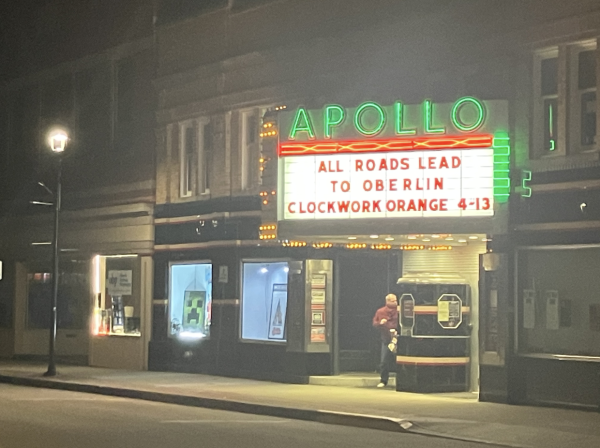Jam City Invites Fans to Hogwarts Via Mobile Game
Congratulations! You have finally been accepted to Hogwarts School of Witchcraft and Wizardry — at the tender age of 21. Ever since Pokemon Go came out two years ago, fans of Harry Potter have clamoured for an interactive mobile game of their own. There were a multitude of fan-made trailers anticipating gameplay, incorporating elements such as catching fantastic beasts or collecting chocolate frog cards from the equivalent of Pokestops.
However, the gameplay construction of Harry Potter: Hogwarts Mystery is more akin to The Sims mobile app that came out earlier this year than to Pokemon Go. Much like The Sims, you design and control your avatar and use limited energy to complete events. Each event holds the potential to acquire gold Galleons, gems, or gain courage, empathy, and knowledge points to progress through the overall storyline. The game begins at the start of your Hogwarts experience, starting off with a visit to Diagon Alley to buy a wand and books. Your character is half-blood instead of muggle-born, which means they were exposed to magic as they grew up, and their brother went to Hogwarts before them. The plot of Hogwarts Mystery surrounds the brother’s expulsion from Hogwarts and his subsequent disappearance after he began investigating the “Cursed Vaults,” which also become integral to the player’s Hogwarts experience.
The gameplay is incredibly interactive, and high-quality graphics present familiar faces such as Madams Hooch and Pomfrey; Professors Dumbledore, McGonagall, Flitwick, and Snape; Rubeus Hagrid; Nymphadora Tonks; and Bill Weasley in recognizable relief, bringing a sense of familiarity to the new storyline. Each professor has their own expressive personality that matches J.K. Rowling’s characterizations. New characters like Rowan, the first friend you make in Diagon Alley, and Merula Snyde, a first year Slytherin who believes she is the best witch of your year, add new narratives to the comfortable backdrop of Hogwarts School of Witchcraft and Wizardry.
The storyline is set right after baby Harry defeats Voldemort for the first time in 1981, which is why your character goes to school with the older generation of Tonks and Bill rather than Harry, Ron, and Hermione. Secondary characters like Bill and Tonks did not get much screen-time in the books compared to the Golden Trio, so their inclusion in this narrative is a lovely homage and an opportunity to learn more about them. This choice allows fans to explore another part of Hogwarts’ history, keeping J.K. Rowling’s world fresh and preventing it from falling into the Spider-Man trap of repeating familiar storylines.
While you’re completing the main storyline, there are side quests that are available during the cooldown times between events. As you move between class years, you gain access to more classes, but at the beginning of your time at Hogwarts, only Potions, Charms, and Flying lessons are available. Each class correlates with an attribute — for every class you complete, the overall reward is points towards the respective attribute in addition to House Cup points. This aspect of the gameplay works particularly well because the level of each attribute you have can restrict the choices you can make in different scenarios. You can choose to develop different attributes to varying degrees, and thus each player’s gameplay will be a little different depending on your choices. Attributes aren’t the only way gameplay can vary. For the main storyline, the game often has the player decide between two options, with no hint as to how each will affect the total outcome. By making Hogwarts Mystery a “choices matter” game, developer Jam City added weight to the player’s decisions, making gameplay more engaging.
There are various customization opportunities for your character, as well as ways to make in-game purchases for gems, energy, and gold Galleons. For players like myself, one of the most valuable items to buy is energy, because the recoup time for each unit of energy is four minutes. When you have only an hour to get an event done and you’re risking the loss of house points if you fail, $0.99 for ten units of energy doesn’t seem like much. But the game is completely playable and enjoyable without making in-game purchases as long as you’re willing to be patient, because different events drop gems that can be exchanged for energy, and on occasion they will offer an energy reward. Energy can also be collected in each level of the castle: Dungeons, East Towers, West Towers, Lower Floor-West, Lower Floor-East, Hogsmeade — which isn’t available until third year — and the Castle Grounds. However, the energy is hidden, and can only be found by observing which parts of the castle or scenery appear to be slightly out of place.
Not all events require energy, which is helpful when you’ve depleted all your resources and really shouldn’t be spending any more money. Some events simply involve talking with one of the other characters and trying to assure them of a plan or comfort them about something they’re afraid of. In these types of interactions, you have the option to choose between three responses to their question or comment: one will be the best, one will be OK, and one will be terrible. There are only so many “turns” that you can use during these interactions, which is why it is important to pick the right response. Having high attribute levels helps as they give bonus points to the overall event meter, which varies in the required number of stars to complete the event. Dueling, where you utilize the spells and potions that you’ve learned to engage in wandfights with your fellow classmates, also does not require energy. Though, be warned, dueling in the corridors is strictly prohibited at Hogwarts.
Overall, though the gameplay is unexpected compared to what fans imagined, this format is much better. Hogwarts Mystery tells us a story and lets us relive what we love best about Harry Potter: the wizarding world.





